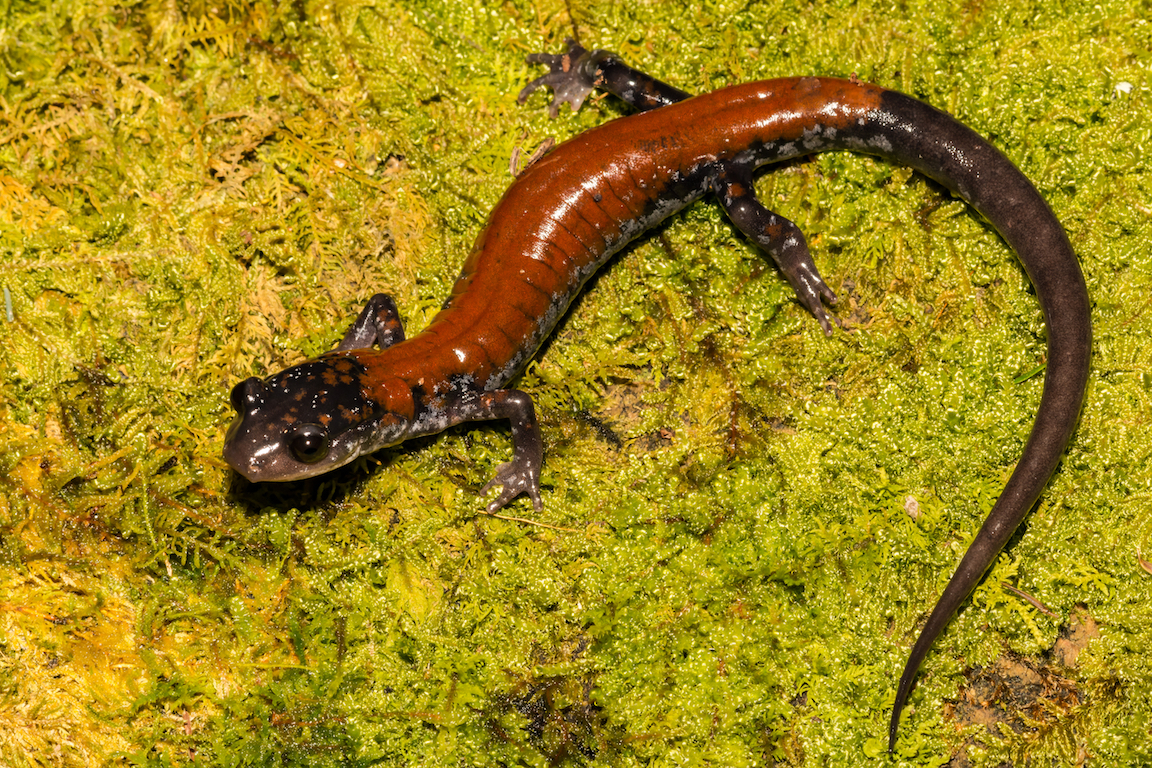
Salamanders may be surprisingly resistant to climate change
The Appalachian Mountains are a global hotspot for salamanders, and ten percent of the world’s salamander species reside in the Southern Appalachian region.
But climate change could make the region inhospitable for salamanders by 2080, leading to an increased risk of extinction for the amphibians and decreasing the rich biodiversity of the area.
However, a new study found that salamander resilience and adaptability, also known as plasticity, has been underestimated by previous research.
The study was conducted by researchers from Clemson University and published in the journal Science Advances.
Salamanders have a great ability to adapt to their environment which led Eric Riddell and Michael Sears, the study’s lead authors, to conclude that salamander plasticity will reduce potential extinction risk up to 72 percent.
Unlike previous studies, the researchers took into account salamander plasticity and how salamanders respond and adapt to stressful temperatures.
“This is one of the first papers that has exclusively looked at plasticity in this sense,” said Sears. “We’re telling you that our new predictions are nowhere near as dire as earlier predictions. In this part of the world, this is a particularly big deal. We can now say more accurately what might occur if climatic conditions continue to deteriorate.”
Sears and Riddell searched for salamanders in North Carolina and estimated the amphibian rough biomass in the area.
The exact number of salamanders in the Appalachian is not known, but in just one square mile of forest, its estimated that you could find a combined salamander biomass of 2500 to 5000 pounds.
Because salamanders are mostly nocturnal many people are probably unaware of just the sheer amount of lizard-like amphibians in the area.
Understanding the threats that climate change poses to salamanders and their habitats is important not just because of the risk of biodiversity loss, but also because of the crucial role that salamanders play in the local ecosystem.
Some salamanders are lungless and absorb oxygen through their moist skin.
This is why previous estimates were concerned about the potential risks of climate change as warmer temperatures would increase aridity in the area making it harder for certain salamanders to absorb the oxygen they need.
However, due to how long salamanders have been in the area, Sears and Riddell feel that their resilience has been largely underestimated and that when temperatures inevitably increase, salamanders will adapt.
David Wake, a curator of the Museum of Vertebrate Zoology at the University of California, Berkeley who was not involved in the study, agreed with Sears and Riddell’s theory of salamander plasticity.
“During the past 2 million years, the southern Appalachians have experienced some dramatic incidents of climate change,” said Wake. “So, how did the salamanders handle it? And how will they handle the accelerated climate change that most scientists accept as a near certainty? In short, they are able to adjust their physiology much more than we previously thought, and this perhaps accounts for much of their ability to deal with climate change – not by running away, but by using their abilities to adjust through time.”
—
By Kay Vandette, Earth.com Staff Writer













